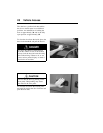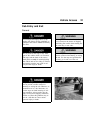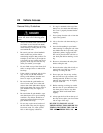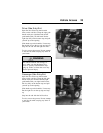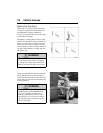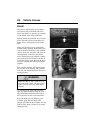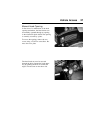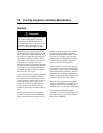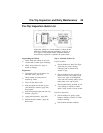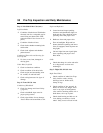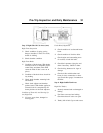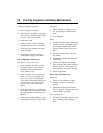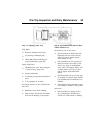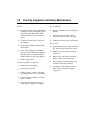
28 Pre-Trip Inspection and Daily Maintenance
General
Before working on or inspecting a vehi-
cle, set the parking brakes, place the
transmission in neutral and block the
wheels. Failure to do so can result in un-
expected vehicle movement and can
cause serious personal injury or death.
Safety is the most important and obvious
reason for doing a pre-trip inspection. Fed-
eral and state laws require inspection done
by the driver. Federal and state inspectors
also inspect commercial vehicles. An un-
safe vehicle can be placed “out of service”
until the driver or owner corrects the
deficiency. Owners and operators should fa-
miliarize themselves with sections 49 CFR
396.11 and 396.13 concerning Federal re-
quirements for vehicle inspection. Certain
other laws may also apply.
Section 49 CFR 396.13 states that all motor
carrier drivers must complete a written re-
port at the end of each work day for each
vehicle operated, covering most of what is
covered in the pre-trip list. The report
should list all defects or deficiencies dis-
covered by the driver. Doing a pre-trip
inspection prepares for the end-of-work re-
port.
Starting on the next page are suggested
guidelines to be used in performing truck,
tractor and trailer pre-trip inspections. De-
pending on the application of the vehicle
being used, these guidelines should be
modified to include other necessary inspec-
tion points. For example, steps and grab
handles should be checked daily on refuse
trucks because the operator is getting in
and out of the cab more frequently.
If any component or system does not pass
this inspection, it must be corrected before
operating the vehicle. Whenever equipment
requires adjustment, replacement, repair or
lubrication, refer to the Service Manuals or
contact a Volvo Truck dealer for the correct
procedures, specifications and intervals.
Take your time going through the pre-trip
inspection. Remember that a careful pre-trip
inspection saves time by eliminating un-
scheduled stops for correcting a faulty item.
The following information has been
provided by the American Trucking Associ-
ation as developed by the D.O.T. Office of
Motor Carriers (BMCS).



